THE ASHOKAN TRAIL
Ashoka was one of the greatest Indian emperors, if not the greatest emperor, he fought the battle of Kalinga and being distraught after seeing the bloodshed there, he took up the path of peace and embraced Buddhism. Every Indian, young and old, wise and dumb, will certainly be aware of this little piece of information about Ashoka, at the least. But do you know what exactly makes him great, there is more to him than what meets the eye?
It was early December, 2021 and its pleasant, balmy weather this time of the year down here in Bangalore, an ideal time to go for a cross-country road-trip. Covid had taken a huge toll both on my social and personal lives, both physically and mentally. It had been two years since I went on any long road trip and hence I decided this was the ideal time to hit the road.
During the long, uneventful lock-down period, I developed a keen interest on reading about India’s ancient history, and when does India’s ancient history begin? Of course with Ashoka. If there is one Emperor in the sub-continent, who has left behind tangible, credible archeological evidence of his legacy, it is Ashoka. Hence Ashoka certainly did pique my curiosity.
Ashoka has left his legacy in the form of inscriptions, all through the sub-continent, right from the seat of his empire in Patna to the frontiers of his kingdom in the north-west provinces of Pakistan, south of India, in several places in Karnataka and Andhra Pradesh. Surprisingly enough, bulk of these inscriptions are present in Karnataka, my home state. I decided to embark upon a biking expedition to all these places, which are spread across North Karnataka and Andhra Pradesh.
Thus, on 11th of December, I started my quest for the Ashokan inscriptions spread across the Karnataka countryside. It was going to be an exciting time-travel through history to the Ashokan days.
Day – 1
On the first day I visited the 3 sites, Bramhagiri, Siddapura and Jatinga Rameshwara. All three inscription sites are located within a radius of 2 kms from each other. The Bramhagiri edict is on the outskirts of a village called Roppa, on a huge boulder, just below a small hillock. The Bramhagiri site is also known to be an ancient neo-lithic site, which had a lot of other pre-historic burial mounds, stone plinths, pottery shreds …etc of pre-historic times.
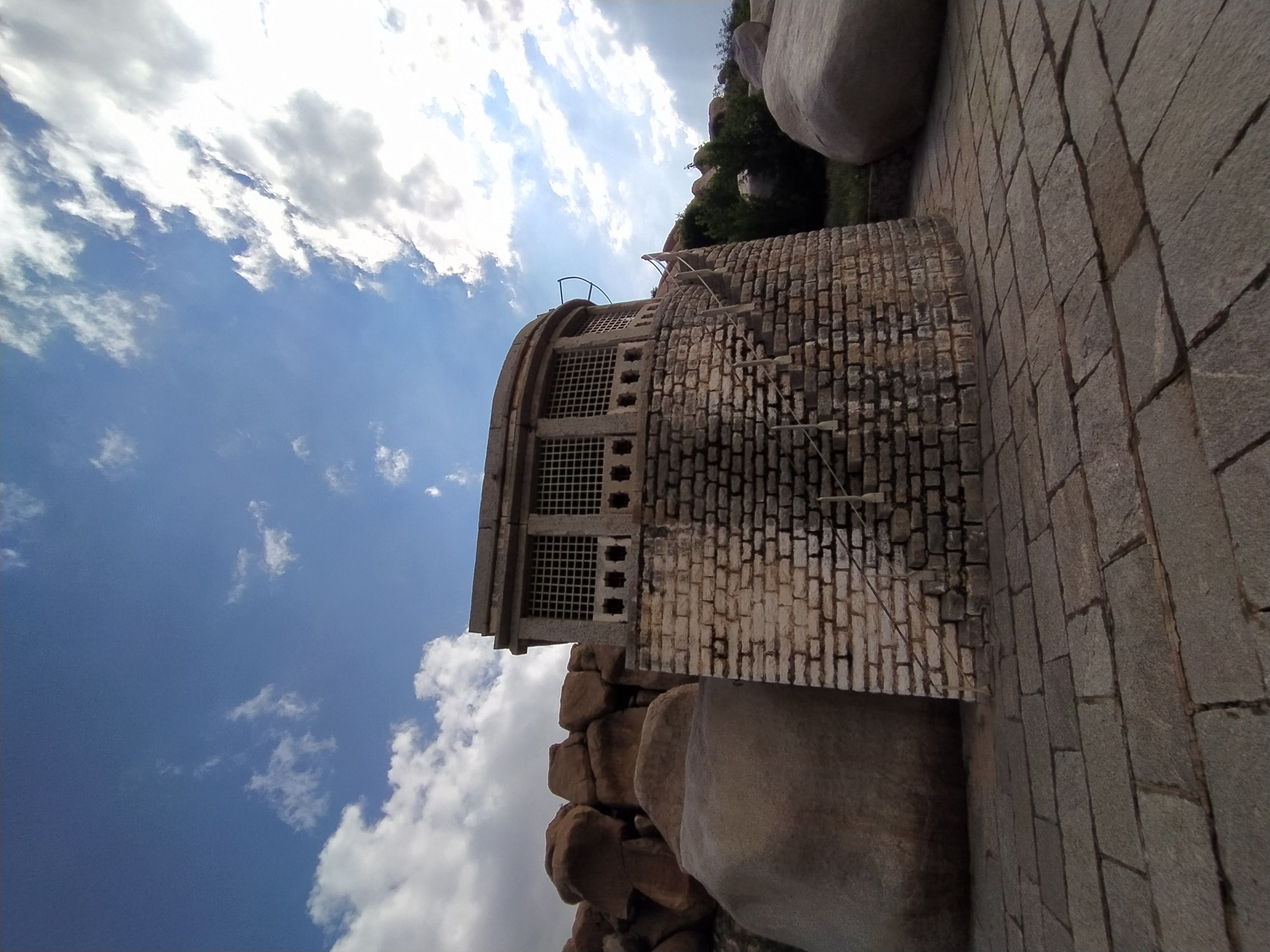

My next stop was Siddapura, which was close to Bramhagiri. It was on the outskirts of the village among some paddy fields. Most of these edicts are in a sad state and in dire need of more protection and upkeep. After Siddapura, I headed next to Jatinga Rameshwara. This edict is high atop a hill which requires a climb of about 700 - 800 stairs for about 40 – 50 mins. It was already late in the day and there was a shred of doubt in my mind if I have to still climb up the mountain this late in the evening. But the adventurer in me did not give up and I eventually made it to the top of the mountain and witnessed the edit over a huge flat boulder. There is also a temple beside the edict site and it was a serene and peaceful environ. After spending some time here, I called it a day and header back in search of a hotel for the days stay.
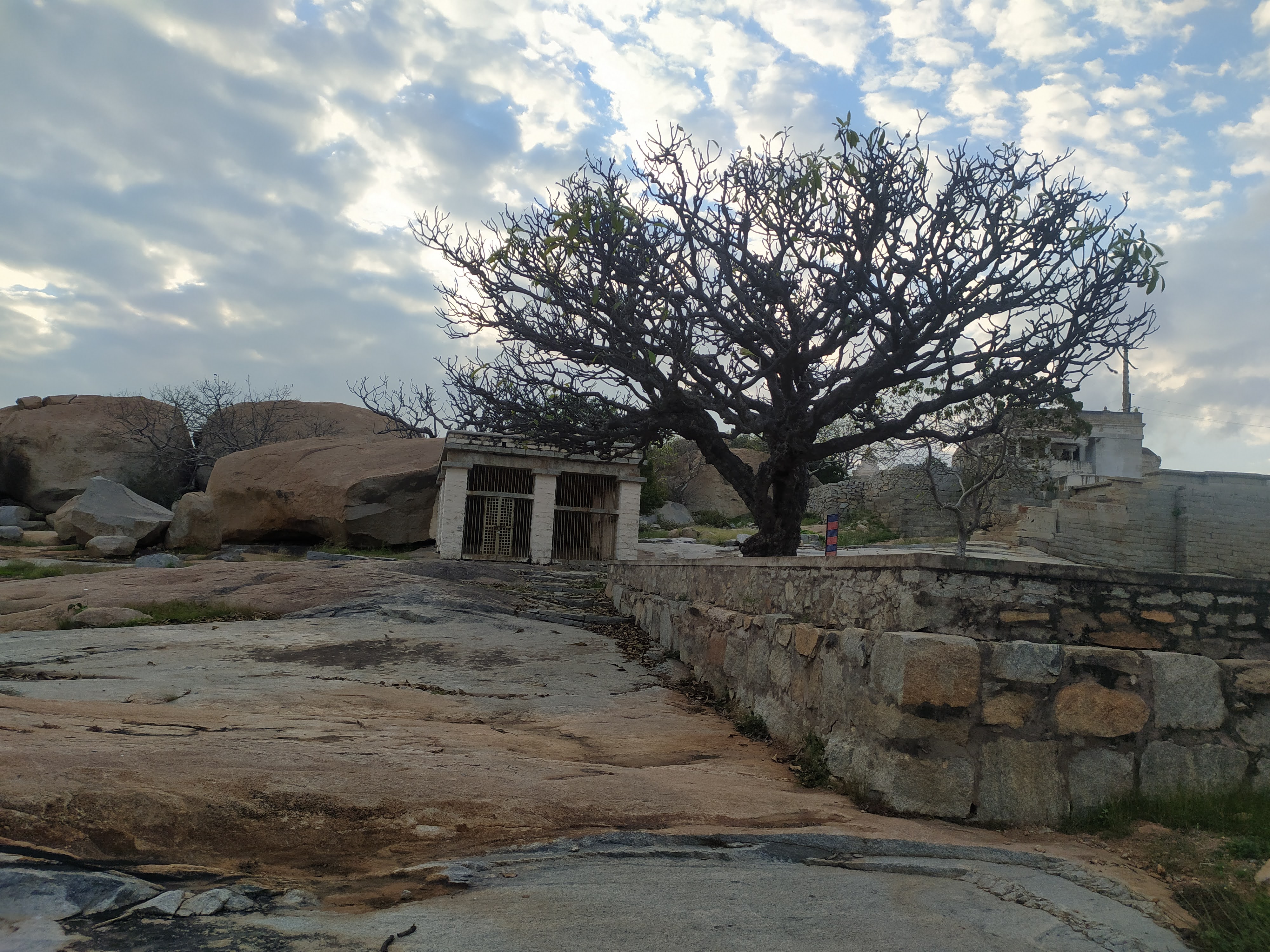
Day - 2
My next destination was across the border in AP. The rural roads in Andhra were bad. Even the highways were nothing but a rubble of stones and negotiating these roads needed both caution and courage. My next destination was Rajula-Mandaragiri. This again like the previous Ashokan edict sites were situated outside any village or town, over a small hill. The inscription is spread over 3 spots located close to each other. There was no ASI information board deciphering the inscription, but I would guess it is the same message of morality that was inscribed in Bramhagiri. There was a temple and a lovely pond right besides this place and I spent a good amount of time photographing the birds. It was already noon by now and my original plan was to visit Erragudi. Since it was already noon by now and I was yet to reach Yadgir which was over 200 kms, I had to skip It sadly, sparing a visit for the next time.
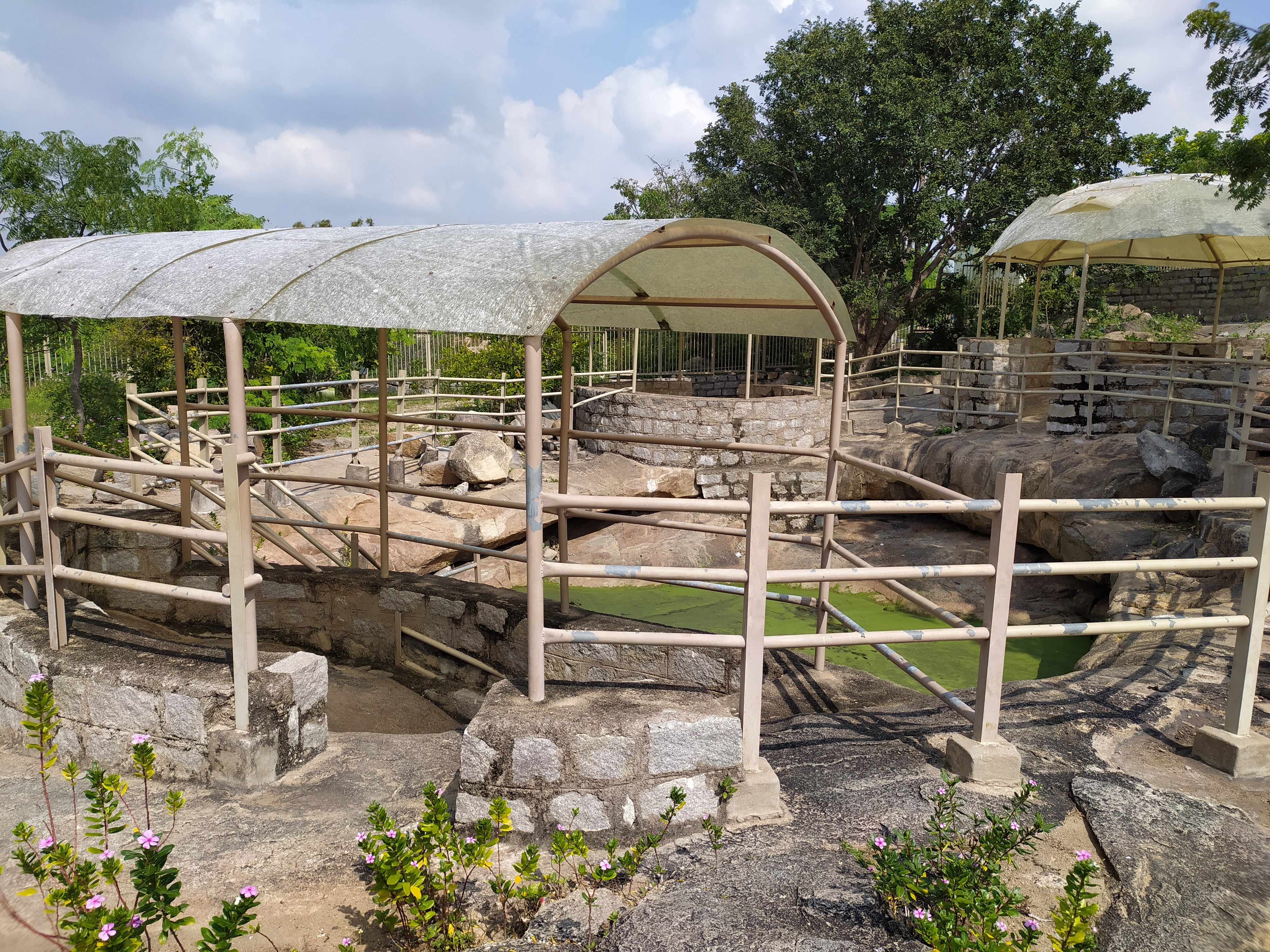
Day – 3
My itinerary for day 3 was a visit to one of the most important Ashokan sites, as well as one of the most important archeological findings of the recent times and a neo-lithic site as well. Sannathi is a small village situated at around 30 kms away from the town of Yadgir. It came into significance in the archeological map of india in the mid-80s when a major Ashokan edict was found in a temple nearby. The edict was used as a pedestal upon which goddess Chandralamba was placed and it was as such was many centuries until the temple renovations took place and they accidentally bumped into this priceless piece of history. Post this incident, a lot of diggings were carried out in this place and surroundings and to their surprise, they unearthed a massive stupa, one larger than the Sanchi and Amaravati in one of the farms under a huge mound of sand. This place also gained significance since this is the only place where Ashoka’s sculpture is available with the name Ashoka inscribed underneath. This place is also protected by the ASI since the Stupa renovation is going on and somehow, strictly, no photography is allowed. I moved towards the town of Shahpur then onwards and this town is famous for a very unusual natural wonder or sorts or you can even call it a natural monument if you like. It is a huge hill which is in the shape of the sleeping Buddha, when seen from a distance. After relishing the sight of this natural wonder, I headed to another neo-lithic site. This place is called Vibhutihalli, and hereby lies a site wherein several rows of rocks and stones are perfectly arranged in a diagonal fashion, for reasons unknown (as in the case of Stonehenge as well). However, some speculate this has astronomical leanings and the rows of the stone perfectly align with the sun as it gradually shifts angle from summer solstice to winter solstice. I called it a day after this.
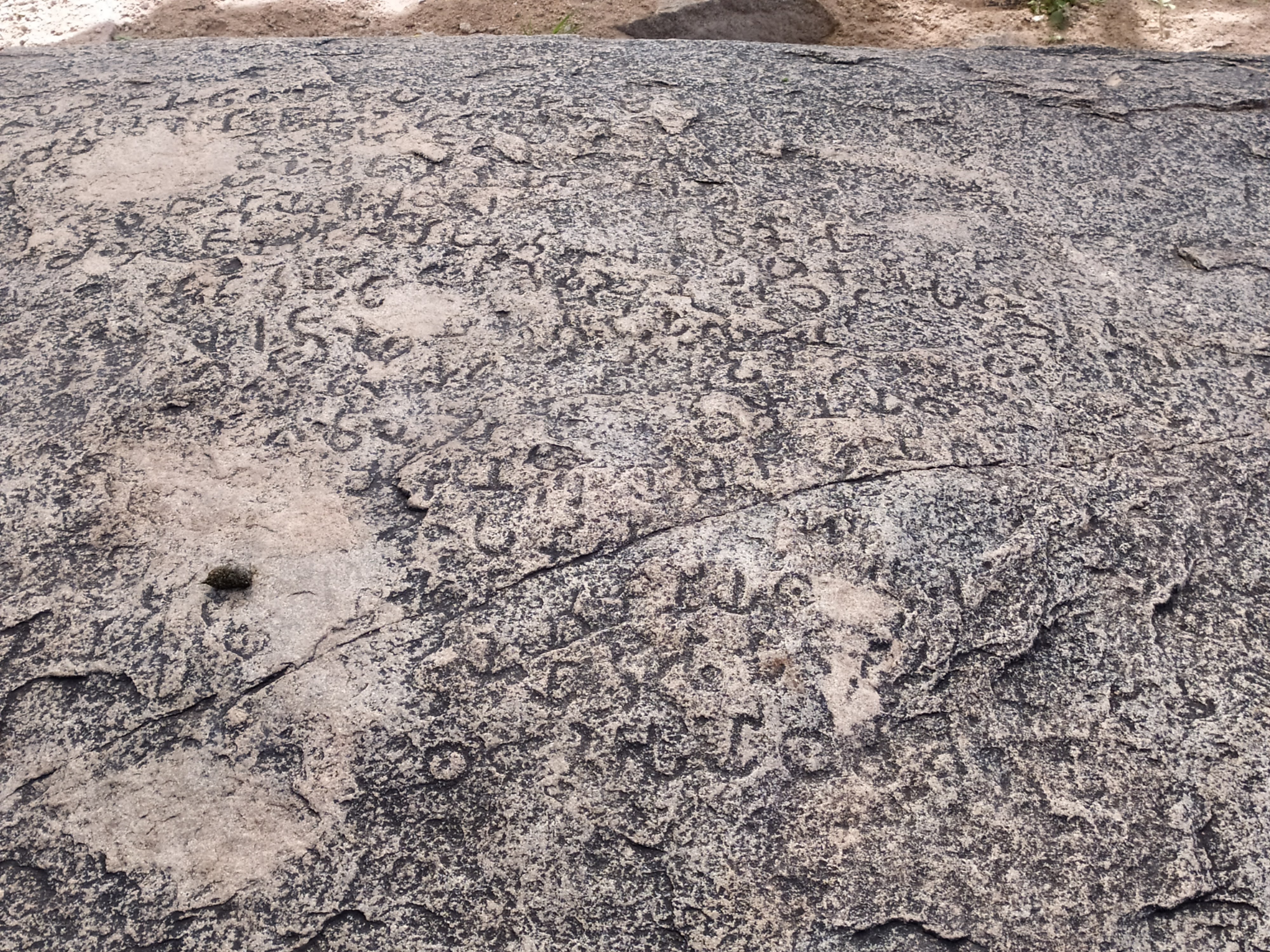
Day – 4
The day 4 began with a bad note. My bike broke down and I spent a full two hours in the company of a mechanic manicured in grease and clanking sound of empty oil cans. After this I headed towards Maski, home to one of the most important Ashokan edicts in India. Important because it was through this edict the would came to know that the person so widely referred to as ‘Devanampiya Piyadasi’ across various ancient Buddhist literary works and other inscriptions is none other than Ashoka. This is the only inscription that contains both his name Ashoka and the title ‘Devanampiya Piyadasi’. The irony of Maski is that the town authorities have spent substantial amount of money in erecting a huge arch proclaiming ‘Ashoka’s Land’ at the entrance of the town, but the monument itself is in a pity state with the enclosure housing the monument looking like a gamblers den, with garbage, empty liquor cans, cigarette buds lying around the monument. My next stop was to be Nittur. The moment I reached the village, I asked a person who was sitting under a peepul tree whiling away his time, the directions for the Nittur Ashokan edict. He gave a balnk look, glancing at my pace with pity wondering if I came from an asylum and if I was allowed to ride a bike. He clearly did not know anything about neither any Ashokan edict nor about Ashoka, anywhere in the vicinity of the village. I stopped wasting more time here and headed along the same road to the outskirts of the village and there near a farm, a broken board showed the direction for the Nittur edict. It was a lovely place with lots of chirping birds, right in between a paddy field. The edict is etched in two huge boulders next to each other, with an ASI board placed in between these two deciphering the Bramhi script. The boulders a housed within a stone shelter, which looks like a mantap, which is probably a recent addition. The lovely chirping sound of the birds, the sound of running water from a nearby brook next to the farm, the twilight colors of the sun, all these elements of nature came together to create a harmonious symphony and it tickled my sensations. It was peaceful and I could resist the temptation to spend an extended amount of time there, photographing and just sitting peacefully, doing nothing.
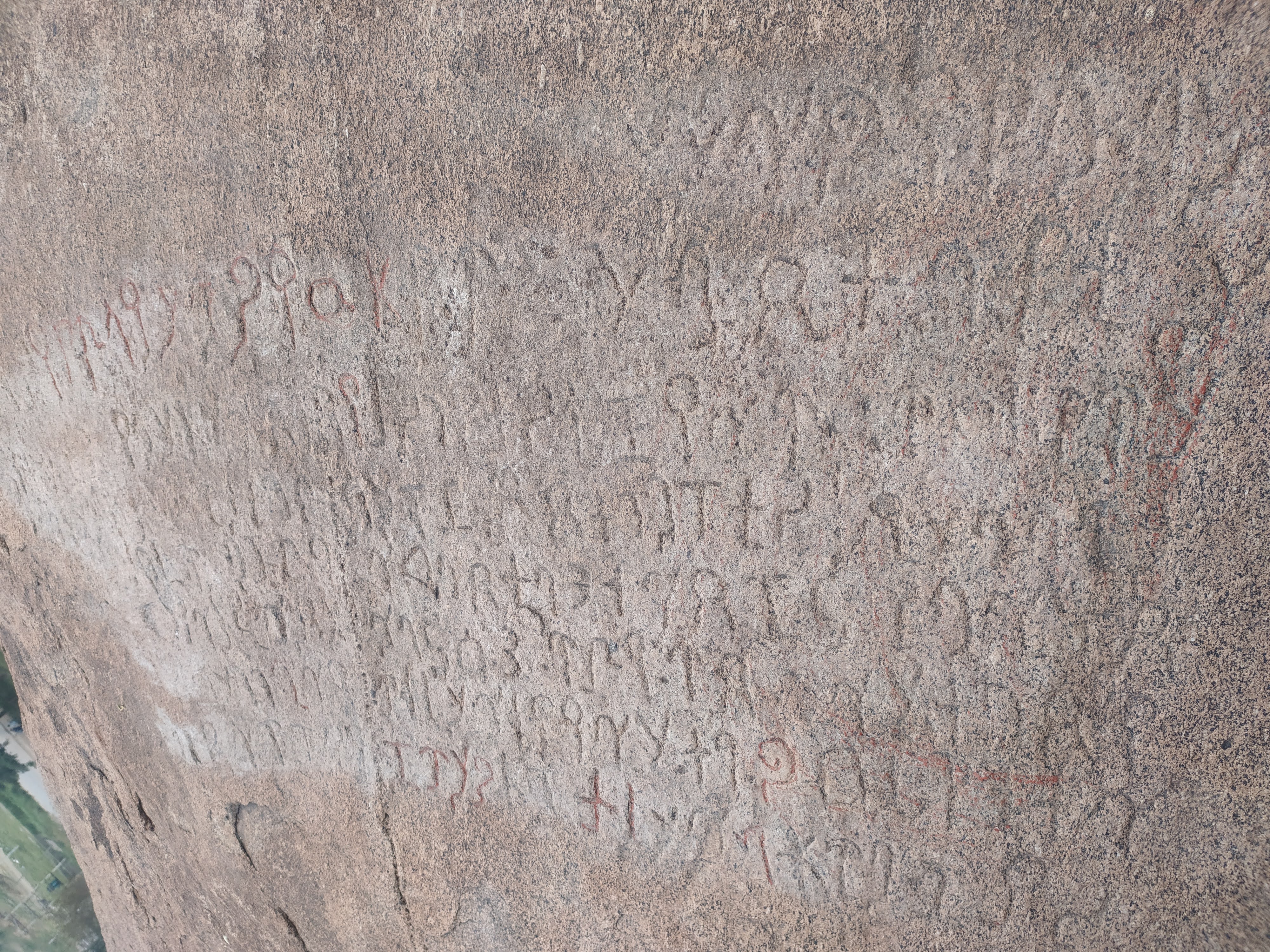
My next stop was in huge contrast to my previous experience. The Udegolam edicts were totally non-accessible to any kind of vehicle, were located far away from any motoreable road. This place had become a mine with a lot of quarrying going on. I parked my bike in the mine road and walked along the muddy tracks made by a heavy mining truck. After around 20 mins of walk, I reached a workers shed and enquired them about the edict. As usual they gave an open mouthed blank look. One considerably knowledgeable bloke among them came from behind and said, ‘Oh you might be looking for that special rock some babus have put up a shelter upon and asked us not to blast it into pieces’. Now it was my turn give a blank look at him with my mouth wide open. He was also a little nervous that I might be a government officer who has come to do some inspection. He led me to the huge rock containing the inscription, which was under a temporary shelter. This was the only boulder shown mercy amidst huge muddle of rocks cut into pieces all around. This entire place was converted to a quarry barring this rock and the worker had been given special instruction not to touch this particular one. There was supposed to be one more rock inscription here, but it was not visible anywhere nearby. Since it was almost dark, I bade a good bye to this place and called it a day. The next day would be an even more adventurous one. I fully hope that the second edict at the Udegolam site is not destroyed by the greedy miners.
Day – 5 (Final Day) I had halted in Koppal the previous night. Koppal is a district headquarters and an important town having religious and historical significance. There are several neo-lithic sites in the vicinity of the town and also close-by is Anjanadri Parvata, believe to be the birth place of Lord Hanuman. Another significance is that the town itself is host to two Ashokan edict sites. One of the site is on a hill called ‘Indrakeela Parvata’. One can ride the bike up until a Mutt (a lingayat monastery) at the foot of the hill. You can still go further in the bike along some muddy tracks made by sand trucks. Reaching this site involves a trek of around 30 minutes. There are no directions, no sign boards nor any marked paths or even a vaguely identifiable trekking trail. You just have to make your route high atop the hill, hoping to bump into the edict at the very top of the hill. It was an Indiana Jones adventure of sorts. After over 30 mins of huff and puff and an encounter with wild vanar sena, I was delighted to see the massive canopy, a mushroom like rock formation under which the Ashokan edict is housed. There is a flight of man-made stairs to reach the rock, upon which the edict is present, which in itself is in an open space under another rock. The inscriptions here have almost withered away with hardly any, even remotely identifiable script. All that you can recognize are a few vague characters and the Buddhist icons, Buddha’s feet. After an adventure of relatively epic proportions, I headed back to the foot of the hill and started towards the second destination of the day.
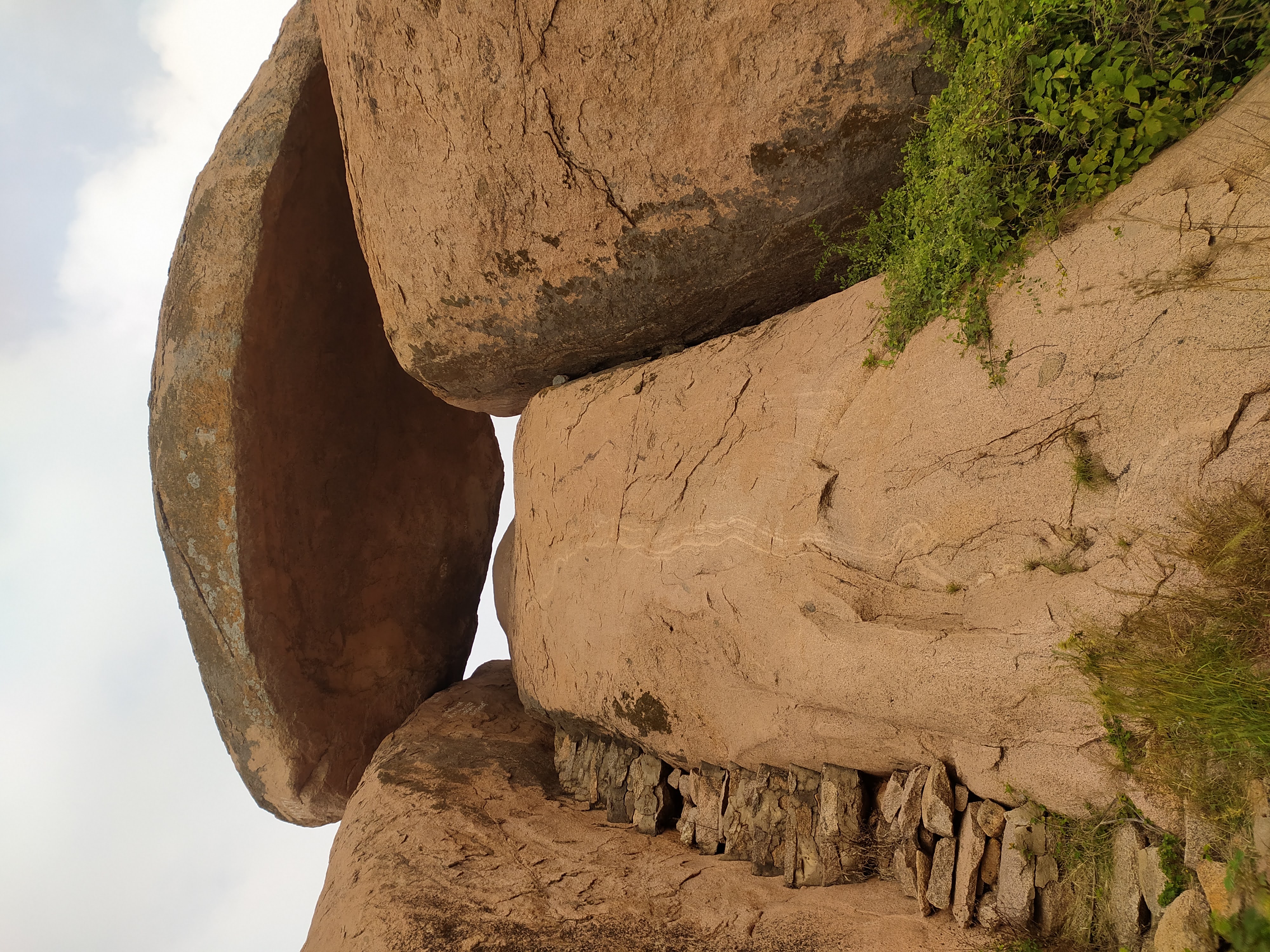
The second edict in koppal was in the other extreme end of the city to the east. This is a relatively smaller hillock than the former and again situated next to a Lingayat monastery called Gavimath. There are striking similarities between the two edicts situated in the Koppal town. This edict as well is inscribed over a rock, under a canopy like structure with an open space underneath and the rock itself forming the canopy sitting upon the inscription rock with 3 touch points. Both the inscriptions in koppal were discovered by the pontiff at the Gavimath. With the Gavimath edict, my expedition came to an end. I returned to Bangalore the next day which was a breezy ride on wide, expansive, silky smooth newly constructed highway.
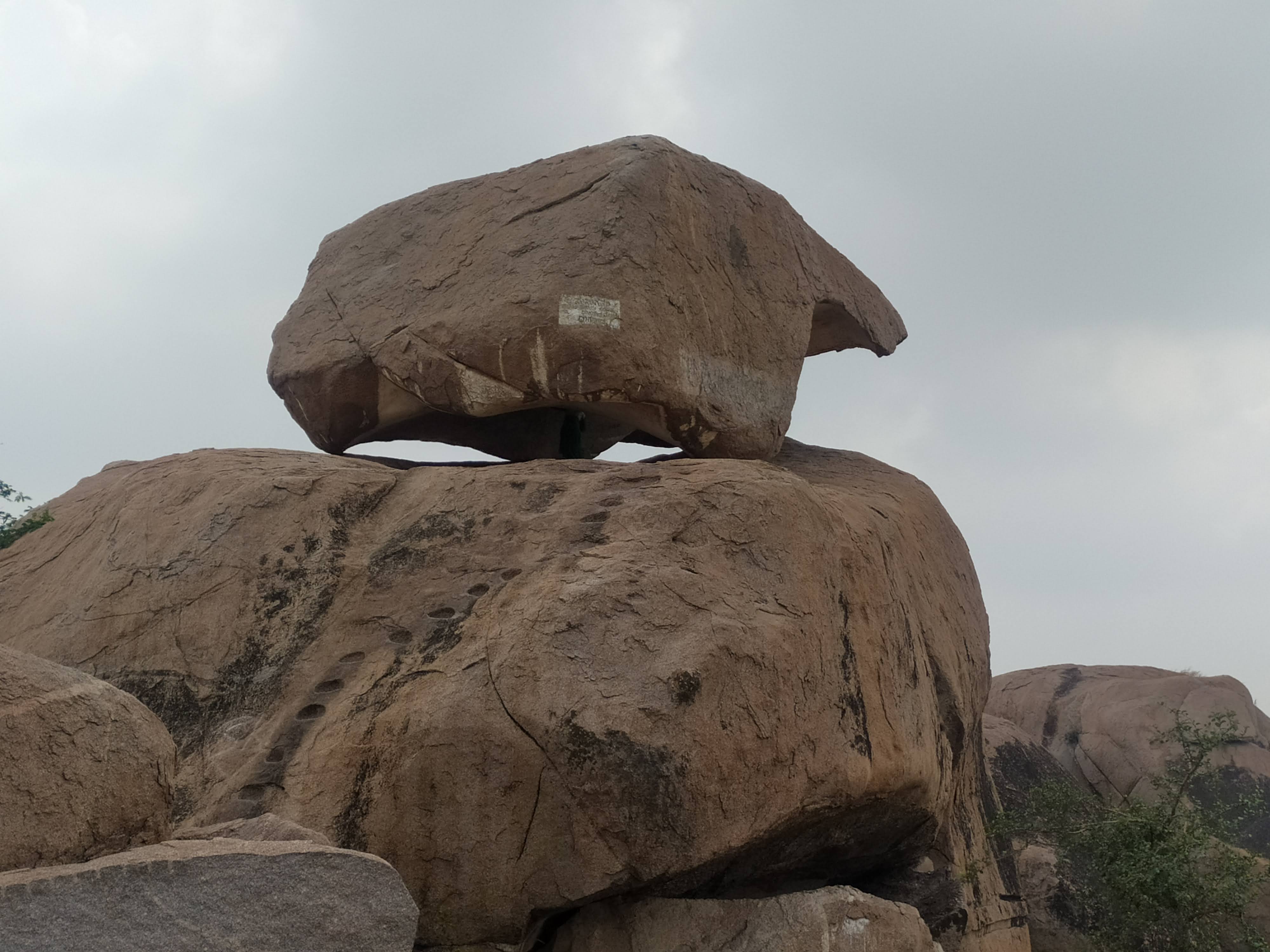
© www.kiranbalakrishna.in. All Rights Reserved. Designed by Kiran Balakrishna